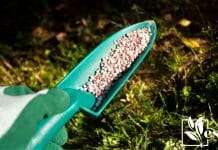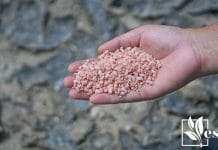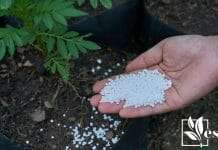In my experience, selecting the right plant food is integral to healthy plant growth and optimal nourishment. Plants, like any other living organisms, need a balanced diet to flourish, which includes an array of nutrients similar to what we might look for in a healthful plant-based diet. Essential nutrients such as nitrogen, phosphorus, and potassium are to plants what whole grains might be to us – fundamental building blocks. Just as we derive health benefits from a rich and varied diet, plants thrive on a well-rounded supply of minerals and vitamins.

To cater to their needs, plant foods come in various formulations, with some being all-purpose and others tailored for specific plant types or growth stages. Liquid plant foods are often preferred for their ease of application and fast absorption by plants. For instance, a balanced, water-soluble plant food can be added to water and used to feed plants during routine watering, ensuring steady growth and vibrant health. In crafting a nutritional regime for my plants, I consider the specific needs of each plant based on its growth pattern, seasonal changes, and the environment it’s growing in.
A well-fed plant is more resilient to disease, pests, and environmental stress. Moreover, using plant food properly can result in healthier roots, stronger growth, and, in flowering or fruiting plants, more abundant blooms and yields. Therefore, understanding and selecting the right plant food impacts not only the health and beauty of the plants but also the success of any garden, be it indoor or outdoor.
JUMP TO TOPIC
Essentials of Plant-Based Nutrition
When I transition to a plant-based diet, I focus on ensuring my meals are well-rounded, emphasizing the nutrients my body needs. Here’s how I make sure my vegan diet is complete and nutritious.
Identifying Key Nutrients in a Vegan Diet
In my vegan diet, it’s critical that I keep a close eye on certain vitamins and minerals that may be more challenging to obtain from plant sources alone. My key nutrients include:
- Vitamins: Particularly B12, which is naturally found in significant amounts only in animal products. I supplement my diet with fortified foods or a B12 supplement.
- Minerals: I ensure to include sources of iron, calcium, magnesium, and zinc. I find iron in leafy greens like kale and spinach, while nuts and seeds are excellent for magnesium and zinc.
- Protein: It’s a common misconception that adequate protein cannot be obtained from plants. I include plenty of legumes, nuts, and seeds in my meals to meet my protein needs.
- Fiber: Unlike animal-derived foods, plants are rich in fiber, which aids in digestion and satiety. Every meal I consume is typically high in fiber.
The Role of Fruits and Vegetables
In my daily diet, fruits and vegetables are indispensable for their vitamin, mineral, and fiber content. Here’s how they play a role in my nutrition:
- Dark, leafy greens: Foods like kale, spinach, and broccoli are loaded with vitamins A, C, E, and K as well as essential minerals like iron and calcium.
- Brightly colored fruits and vegetables: I consume a rainbow of produce to benefit from a wide range of antioxidants and phytonutrients. These not only contribute to overall health but also help fight inflammation.
The Importance of Whole Grains and Legumes
Whole grains and legumes are staples in my plant-based diet for a variety of reasons:
- Whole Grains: Foods such as oats, barley, quinoa, and buckwheat serve as excellent bases for meals. They offer essential B vitamins, iron, fiber, and even protein.
- Legumes: Chickpeas, lentils, beans, and peas are some of my go-to sources for protein. They also provide iron, fiber, and a host of micronutrients essential for a healthy vegan diet.
| Food Group | Benefits | Nutrients | Examples |
|---|---|---|---|
| Whole Grains | Heartiness, Fiber, B Vitamins | Iron, Protein | Oats, Quinoa |
| Legumes | Protein Rich, Satiety | Fiber, Iron | Lentils, Chickpeas |
| Fruits & Vegetables | Antioxidants, Phytonutrients | Vitamins, Minerals | Kale, Berries |
Health Benefits and Disease Prevention
In my experience, committing to a plant-based diet can substantially benefit overall health and aid in preventing several chronic illnesses. Adopting this dietary approach has specific advantages for heart disease, diabetes, blood pressure, cancer, and cholesterol levels, contributing to increased longevity.
Reducing the Risk of Chronic Diseases
I’ve found that plant foods are rich in fiber, vitamins, minerals, and antioxidants, which play a crucial role in maintaining heart health. Here, let me share some specific relationships between plant-based diets and chronic disease risks:
- Heart disease: Consuming whole grains, fruits, and vegetables can improve heart health by lowering blood pressure and cholesterol levels.
- Diabetes: A diet rich in legumes and nuts can help regulate blood sugars and prevent type 2 diabetes.
- Cancer: The antioxidants in plant-based foods can protect cells from damage that may lead to cancer.
It’s important to understand that the benefits stem from high-quality, nutrient-dense foods rather than processed options laden with sugar or unhealthy fats.
Promoting Weight Management and Longevity
A thoughtful selection of plant-based foods contributes to weight management due to their lower calorie density and high fiber content, which can lead to a feeling of fullness and reduced caloric intake. Here’s how embracing plant foods supports longevity goals:
- Legumes, whole grains, and vegetables can contribute to a longer lifespan by supporting weight management.
- Nuts and seeds provide essential fatty acids that have been associated with reduced risk of chronic diseases.
The correlation between a plant-based diet and longevity is not just about reducing disease but also enhancing quality of life. Remember, it’s not just about living longer; it’s about living better.
Incorporating Plant-Based Foods in Daily Meals
Transitioning to a plant-based diet involves creatively incorporating a wide variety of plant foods into your daily meals. It’s not only about having a salad; it’s about exploring new flavors and foods that I might not have regularly consumed before. I find it vital to ensure meals are balanced with protein, vitamins, and minerals that support my health.
Creative Ideas for Breakfast
For a nourishing start to the day, I like to use ingredients such as oatmeal, tofu, and fruits. Here’s how I might prepare my breakfast:
- Oatmeal: I mix rolled oats with almond milk and a touch of cinnamon, then top it with fresh berries and a spoonful of chia seeds.
- Tofu Scramble: I sauté crumbled tofu with turmeric, spinach, and mushrooms for a protein-rich breakfast.
Satisfying Plant-Based Lunch Options
Lunch is a perfect time to pack in a variety of vegetables. My go-to lunch ideas include:
- Quinoa Salad: Cooked quinoa tossed with diced bell peppers, cucumbers, cherry tomatoes, and a lemon-tahini dressing.
- Chickpea Sandwich: Mashed chickpeas mixed with vegan mayonnaise, mustard, and a handful of lettuce between whole wheat bread.
Delicious Dinner Recipes
Dinner is when I get more experimental. Here are a couple of homemade recipes I’ve grown to love:
- Stuffed Bell Peppers: I fill bell peppers with a mixture of brown rice, black beans, corn, and avocado then bake them until tender.
- Tempeh Stir-fry: I stir-fry tempeh with a collection of vegetables like asparagus and snow peas, and serve it with a side of brown rice.
Delectable Plant-Based Desserts and Snacks
I don’t skip on treats; instead, I opt for healthier plant-based choices:
- Avocado Chocolate Mousse: Blended avocado with cacao powder and a bit of maple syrup creates a creamy and satisfying dessert.
- Nuts and Fruit: A simple snack of almonds, walnuts, or cashews with slices of apple or pear.
Planning meals with an emphasis on fresh produce and diverse ingredients makes it easier to enjoy a plant-based lifestyle. I find that each meal is an opportunity to nourish my body and delight in the abundance of flavors that plant foods offer.
Good Plant Food: Ensuring Optimal Nutrition through Labels
When I select plant food at the store, I rigorously inspect labels. This is crucial for understanding what I’m providing my plants and it can be equally applied when shopping for plant-based foods for personal consumption.
Deciphering Labels for Health-Conscious Shopping
I’ve discovered that effectively reading labels involves a keen eye for certain keywords and certifications. These offer assurance regarding nutrient content and safety standards. Organic labels signify that a plant food meets rigorous criteria set by certifying bodies and is free from synthetic fertilizers and genetically modified organisms (GMOs). Becoming adept at label interpretation can significantly impact the quality of the plant-based foods I choose.
- Non-GMO labels indicate the absence of genetic modification, a characteristic many shoppers today look for.
- Ingredients: The simpler, the better, usually indicates fewer additives.
- Nutritional Content: Key for understanding macronutrient and micronutrient ratios.
- Certifications: Trustworthy indicators of food quality like USDA Organic or Non-GMO Project Verified.
The Benefits of Organic and Non-GMO Foods
By opting for organic and non-GMO products, I’ve noticed a marked increase in the quality of my plant foods. These practices support sustainable farming methods that are not only better for the environment but also can lead to more nutrient-dense foods.
- Organic foods are grown without synthetic pesticides, fertilizers, and other prohibited substances, which helps maintain the integrity of the plants I’m growing or consuming.
- Shop for the USDA Organic seal as it helps identify genuine organic products.
💥 Remember: Organic isn’t just a label, it’s an assurance of quality and an investment in environmental health.
Plants need proper nutrition to flourish, and the plant-based foods we consume deserve the same scrutiny. Whether it’s food for my garden or my table, understanding food labels and quality makes a tangible difference. Organic and non-GMO labels are markers that can guide us toward better health and environmental stewardship.











